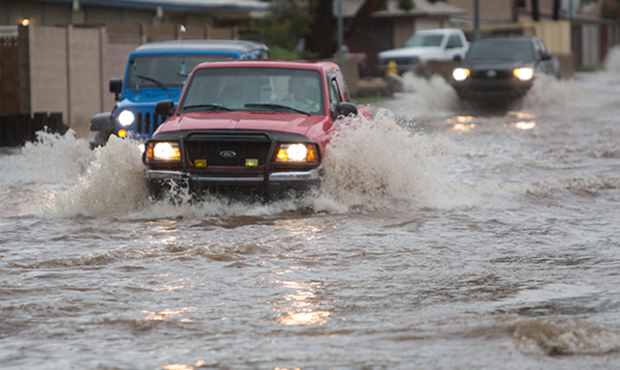Solutions
The damage caused by ice dams can be controlled in 2 ways: Maintain the entire roof surface at ambient outdoor temperatures or build a roof so that it can’t leak into sensitive building materials if an ice dam forms.
Cold roofs make a lot of sense. Here you let the cold outdoor air work for you. Keep the entire roof as cold as the outdoor air and you solve the ice-dam riddle. Look at the roof of an unheated shed or garage, a pile of lumber or an abandoned home. Ice dams don’t form on these structures because there is no uneven melting and freezing!
For new construction it’s easy. Design the house to include plenty of ceiling insulation, a continuous air barrier separating the living space from the underside of the roof, and an effective roof ventilation system. Insulation retards the conductive flow of heat from the house to the roof surface. An air barrier retards the flow of heated air to the underside of the roof. And a good roof-ventilation system helps keep the roof sheathing cold. In an existing house this approach may be more difficult to follow. Often you are stuck with less than desirable conditions. But let’s look more closely at all the issues that will guide your strategy.
Insulation: Houses in the northern United States should be equipped with ceiling insulation of at least R-38 (about 12 inches of fiberglass or cellulose). The insulation should be continuous and consistently deep. The most notable problem area is located above the exterior wall. Raised-heel trusses or roof-framing details that allow for R-38 above the exterior wall should be used in new construction. In existing structures, where the space between the wall’s top plate and underside of the roof sheathing is restricted, install high R/inch insulating foam (R-6/inch). Be sure to seal the insulation at this point to prevent warm-air leakage from the living space.
Ventilation: A soffit-to-ridge ventilation system is the most effective ventilation scheme you can use to cool roof sheathing. Power vents, turbines, roof vents and gable louvers just aren’t as good. Soffit and ridge vents should run continuously along the length of the house. A baffled ridge vent (like the one sold by Air Vent) is best because it will exhaust attic air regardless of wind direction. The exhaust pressure created by the ridge vent sucks cold make-up air into the attic through the soffit vents. A 2-inch space or “air-chute” should be provided between the top of the insulation and the underside of the roof sheathing in all applications. The in-coming “soffit” air washes the underside of the roof sheathing with a continuous flow of cold air. CAUTION: Be sure to install insulation baffles above the exterior wall to protect the insulation from the air that blows in through the soffit vents.
Air Leakage: Insulation retards conductive heat loss, but a special effort must be made to block the flow of warm indoor air (convection) into the attic or roof area. Small holes allow significant volumes of warm indoor air to pass into attic spaces. In new construction avoid making penetrations through the ceiling whenever possible. But when you can’t avoid making penetrations or when you need to air-tighten existing homes use urethane spray-foam (in a can), caulking, packed cellulose, or weatherstripping to seal all ceiling leaks like:
-
wire penetrations
-
plumbing penetrations
-
ceiling light fixtures
-
attic hatches
-
chimneys
-
bathroom exhaust fans
-
intersection of interior partitions and ceiling
Visit our website at biowashing.com








